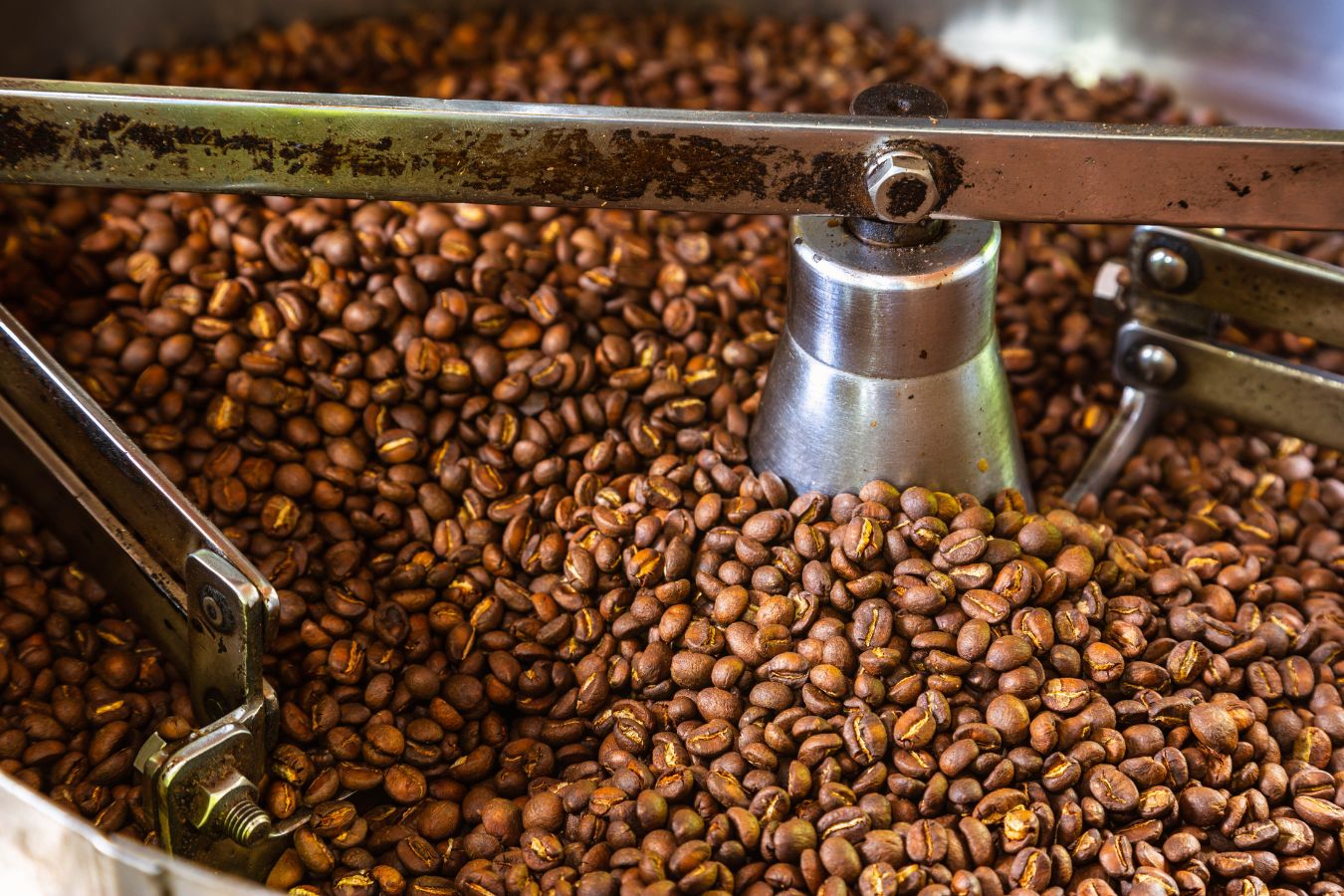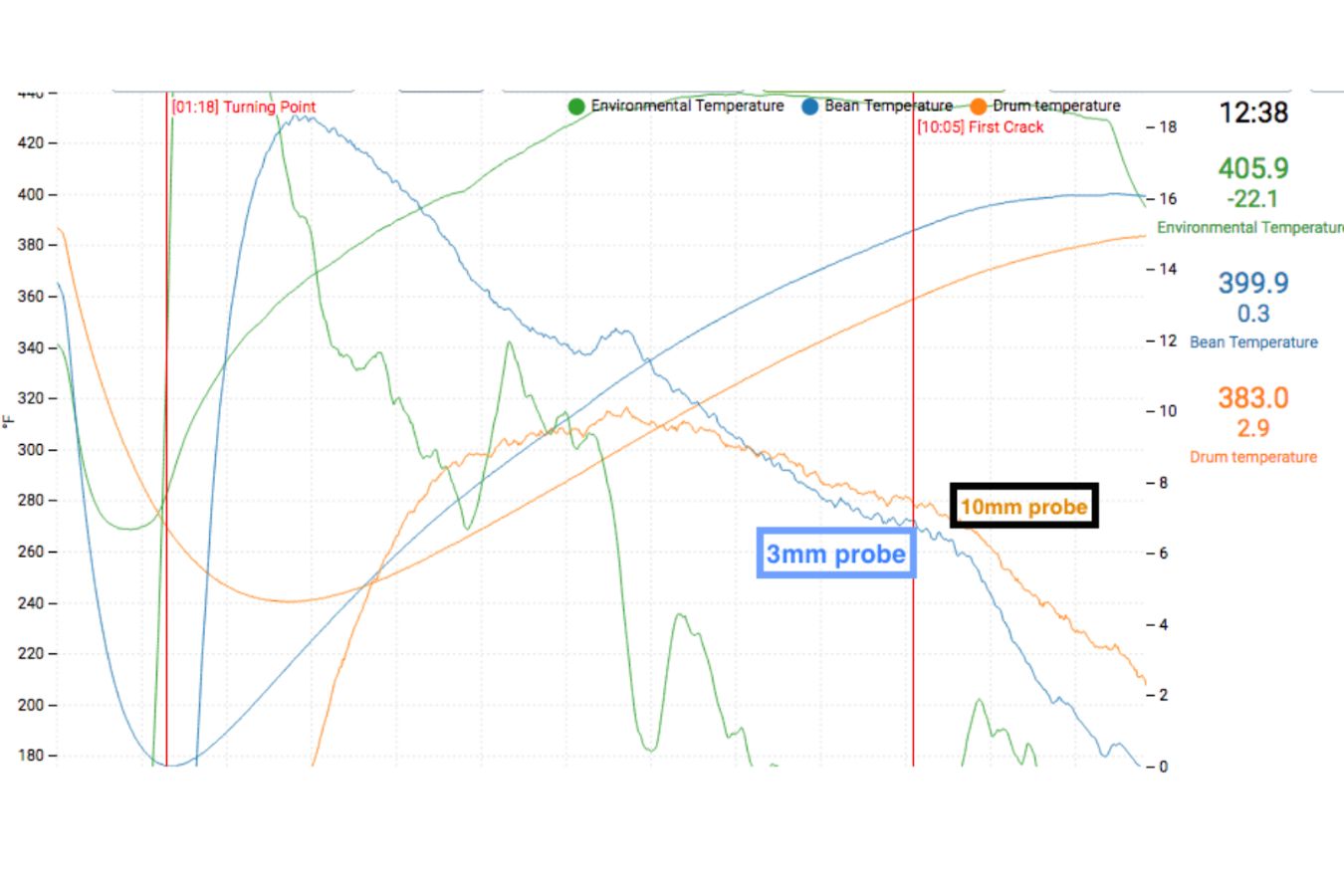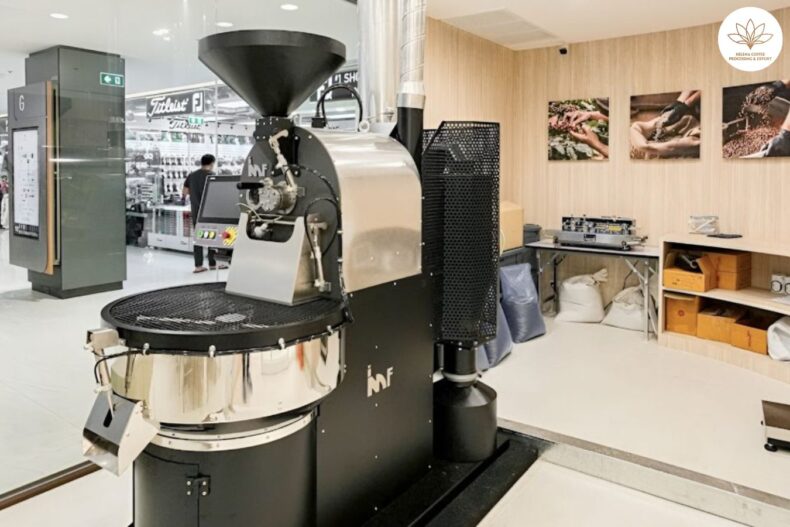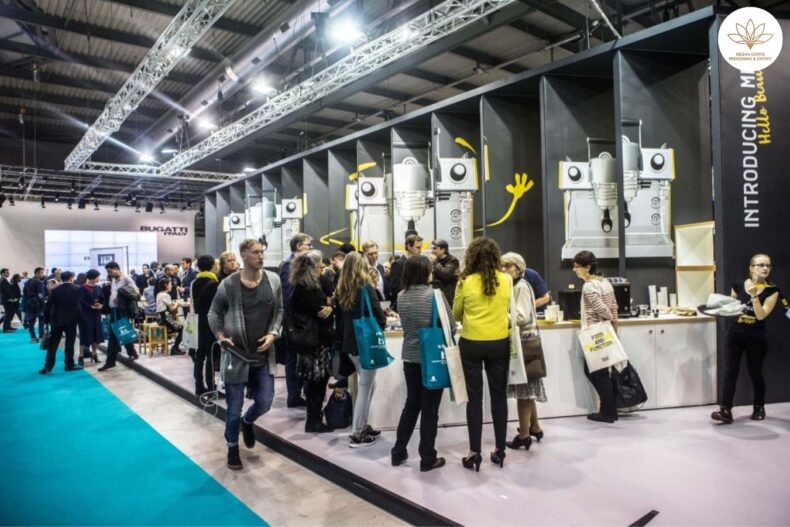
The pace at which the temperature of green bean coffee rises during roasting is usually referred to as RoR. It’s calculated over a set amount of time, usually between 30 and 60 seconds (a 30-second interval gives you greater control).
Meaning of RoR. Rate of Rising
People frequently debate whether a high or low RoR is desirable. Said, a greater RoR indicates that your roast is growing faster; a lower figure shows that it is progressing more slowly.
The typical pattern in RoR is for the heat to drop quickly at the beginning of roasting (the drying phase). When the grain and drum temperatures coincide, the decline will finally stabilize (causing a turning point). You’ll start to see a positive rate at this time.)

The batch may approach a stalling point, also known as stalling if the roast’s RoR goes too low. This might result in a “baked” flavor that is flat and less sweet and is commonly described as bready or papery. In this situation, the aromatic compounds of the coffee will not be developed.
However, that does not imply that a high RoR is the best. Your goal should be to accurately regulate your RoR. And as you get better at it, you’ll notice that you can get different flavors out of your coffee. A higher RoR, for example, can enhance acidity early in the roasting process, whereas a lower RoR can assist in regulating the sweetness of the beans.
The batch may approach a stalling point, also known as stalling if the roast’s RoR goes too low. This might result in a “baked” flavor that is flat and less sweet and is commonly described as bready or papery. The aromatic chemicals of the coffee will not grow in this environment.
A higher RoR, for example, can enhance acidity early in the roasting process, whereas a lower RoR can assist in regulating the sweetness of the beans.
Top, Crack and End Rate of Rising
As the roast progresses, your RoR will fluctuate, and there will be specific instances that need extra attention. This comprises the stages RoR Top/max (max), RoR Crack (cracked), and RoR End (end), all of which are considered significant by specialists at perfectdailygrind.

- RoR Top/max is the time following the turning point (when the temperature stops falling and starts to climb, causing you to go from negative to positive) when RoR is at its highest.
- RoR Crack indicates the temperature shift in the initial fracture. Due to steam escaping from the beans, several roasters struggle to keep their bean temperatures (remember, this is distinct from RoR) from dropping.
- RoR End is, of course, at the end of the roasting process. At this point, you must be cautious since the beans will be drier and hence crunchier.
When to adjust
There are some good “rules” to follow when playing RoR. According to Scott Rao, the most important thing is to keep the RoR from increasing. If it slows down – as previously said, “baked coffee” has a bland taste – and increased RoR – particularly after the first break – can result in a soft sweetness of the coffee.
However, there are specific points during the roasting process when you can change your RoR.
The drying and roasting stages of the seeds, for example, give you plenty of opportunities to experiment with temperature in the minutes leading up to and immediately following the initial crack, on the other hand. Changes done at that time can have a wide range of repercussions, so you must use extreme caution (according to Jen Apodaca, Royal Coffee Roasting Director).
Coffee roasting, commercial coffee roaster
Even in competent hands, most major brand machines are capable of roasting a wonderful pot of coffee, but certain machines have characteristics that make top-quality roasting and reproduction too tough.
Thin, single-walled drums, sluggish gas valves, valves with poor resolution at low settings, high insulation surrounding the drum, slow or poorly positioned probes, and limited control of roasts after the initial crack are all common examples of such qualities.


